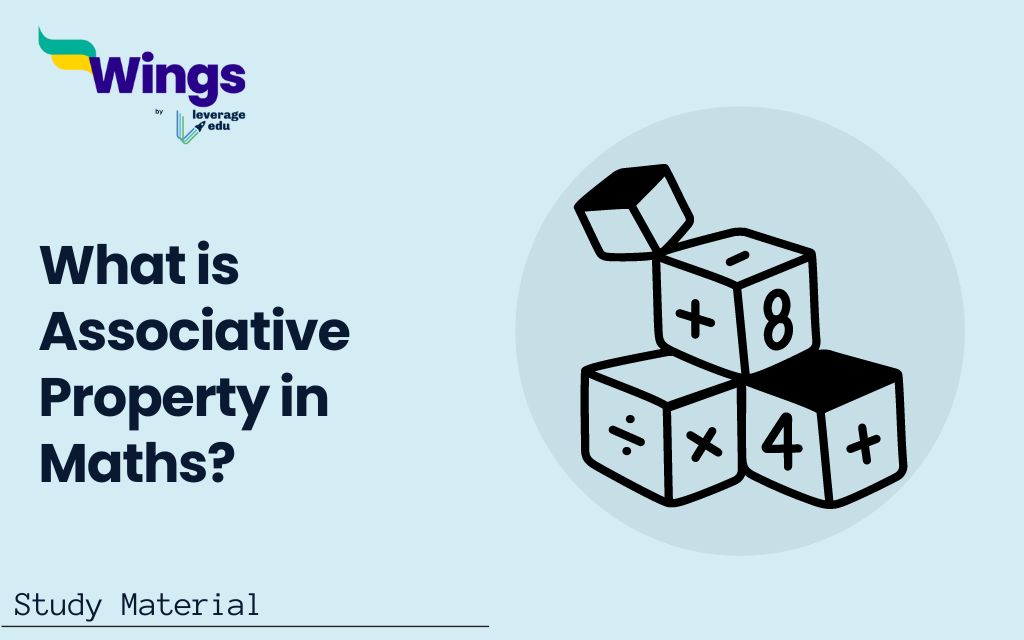The associative property is a property of binary operations that states that rearranging numbers within the parentheses or brackets will not change its result. It is commonly used in solving numerical problems or equations. In this section, we will discuss about the associative property to make it comprehensive for students.
Contents
What is Associative Property in Maths?
Associative Property states that the addition and multiplication of numbers will give the same results irrespective of how they are grouped. By grouping, it means how the number is arranged in parentheses. For example: there are two equations 2+(6+3) and 3+(2+6)
For the first equation,
=2+(6+3)
=2+9
=11
For the second equation,
=3+(2+6)
=3+8
=11
Hence,
2+(6+3) and 3+(2+6), both will have the same outcome 11, even if they arranged differently.
That means no matter how you are arranging the given numbers in addition and multiplication, it will yield the same result. This property is applicable only for addition and multiplication wherever more than two numbers are involved.
Also Read: Main Branches of Mathematics Tree
Associative Property of Addition
The associative property of addition states that no matter how the given numbers are arranged in parentheses for addition, they will have the same result. It means
x+(y+z)= (x+y)+z
Let us understand it with an example;
We do have three numbers for addition= 2+6+4
Now, we will group these numbers in brackets in two different ways:
2+(6+4) and (2+6)+4
For the first equation,
=2+(6+4)
=2+10
=12
For the second equation,
=(2+6)+4
=8+4
=12
After solving them, we can see that both equations have the same result, 12. This is the associative property of addition.
Also Read: Algebraic Identities: Examples and Chart
Associative Property of Multiplication
The associative property of multiplication states that the product of three or more than three numbers will be the same, no matter how they are arranged or grouped. It means
x(yz) = (xy)z
Let us understand with an example;
We do have three numbers for multiplication= 2x6x3
Now, we will group these numbers in brackets in two different ways:
(2×6)x3 and 2x(6×3)
For the first equation,
=(2×6)x3
=12×3
=36
For the second equation,
=2x(6×3)
=2×18
=36
After solving them, we can see that the product for both the equation is the same, 36. This is the associative property of multiplication.
Is Associative Property Applicable in Subtraction and Division?
No, the associative property is not applicable in subtraction and division.
Let us take an example to understand it more clearly.
In the case of subtraction,
2-(8-4) and (2-8)-4 are two equations.
For the first equation,
=2-(8-4)
=2-4
=-2
For the second equation,
=(2-8)-4
=-6-4
=-10
Hence, we can see that both the equations have different results, which shows that associative property is not applicable in subtraction.
In the case of division,
24÷(4÷2) and (24÷4)÷2 are two equations.
For the first equation,
=24÷(4÷2)
=24÷2
=12
For the second equation,
=(24÷4)÷2
=6÷2
=3
Hence, we can see that both the equations have different results, which shows that associative property is not applicable in division.
Also Read: Understanding Set Theory Formulas & Questions
FAQs
Associative Property states that the addition and multiplication of numbers will give the same results irrespective of how they are grouped. By grouping, it means how the number is arranged in parentheses.
The associative property is applicable in addition and multiplication only.
The formula for the associative property of addition is x+(y+z)= (x+y)+z.
Related Reads
| What are Co Prime Numbers? | How to Find Percentage of Marks? |
| 20 Most Famous Indian Mathematicians | 7 Types of Fractions with Examples |
| Word Problems on Arithmetic Operations | Maths Formulas for Class 10th |
This was all about the “Associative Property”. For more such informative blogs, check out our Maths Section, or you can learn more about us by visiting our Study Material Section page.
 One app for all your study abroad needs
One app for all your study abroad needs














